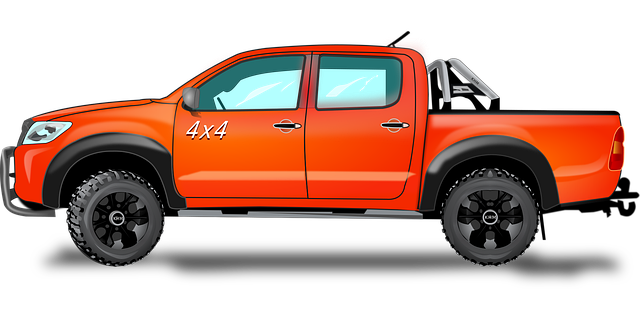Shackles are critical components in RGV Overland 4×4 repairs, connecting wheels to chassis and managing extreme forces during off-road travel. They absorb shock, allow vertical movement, and prevent wheel separation, enhancing vehicle stability and safety on challenging surfaces. Regular maintenance, including inspection for wear and corrosion, replacement of faulty parts, and proper alignment, is essential to prevent shackle issues escalating. Choosing the right shackle type (e.g., U-shackles for tow ropes, D-shackles for rigging) based on terrain demands optimizes performance and safety. Proactive care, such as lubrication, cleaning, and storage, extends shackle lifespan in RGV Overland 4×4 repairs.
“Unleash your off-road adventures with a deeper understanding of shackles—essential components keeping your 4×4 planted. This comprehensive guide delves into the intricate world of shackles, from unraveling their basic structure and functions to identifying and troubleshooting common issues plaguing your rig.
Learn the ins and outs of RGV-Overland 4×4 repair, explore diverse shackle types, and discover maintenance secrets to prolong their lifespan. Master these skills, and you’ll be ready to conquer any terrain with enhanced vehicle performance.”
- Understanding Shackles: The Basic Components and Their Function in Vehicles
- rgv-overland 4×4-repair: A Comprehensive Guide to Tackling Shackle Issues
- Common Types of Shackles and Their Applications in Off-Road Vehicles
- Identifying and Troubleshooting Shackle Problems for Optimal Vehicle Performance
- Maintenance Tips and Best Practices for Extending Shackle Lifespan
Understanding Shackles: The Basic Components and Their Function in Vehicles

Shackles, a fundamental component in off-road vehicles like RGV Overland 4×4-repair setups, play a crucial role in connecting and suspending wheels to the chassis. These metal links or U-shaped components are designed to manage extreme forces during rugged terrain navigation. Each shackle is attached to both the axle and the vehicle’s frame, allowing for flexibility while preventing wheel separation from the body—a common issue in challenging driving conditions.
Their basic structure consists of a curved bar with holes or pins for attachment points. This design enables them to absorb shock and allow for vertical movement, ensuring smoother rides over uneven surfaces. Understanding shackle functionality is essential for any RGV Overland 4×4-repair enthusiast, as it directly impacts vehicle performance, stability, and safety during overland adventures.
rgv-overland 4×4-repair: A Comprehensive Guide to Tackling Shackle Issues

Shackles play a vital role in the performance and stability of any off-road vehicle, especially when navigating challenging terrains. When it comes to RGV-Overland 4×4-repair, addressing shackle issues is a comprehensive process that requires meticulous attention to detail. These crucial components connect your vehicle’s suspension system to the wheels, ensuring optimal ground clearance and control during adventurous drives.
A Comprehensive Guide to Tackling Shackle Issues involves several steps. First, inspect the shackles for signs of wear, corrosion, or damage. Regular maintenance checks are essential to identify minor issues before they escalate. Replace any faulty shackles with high-quality, compatible parts designed for rugged conditions. Ensure proper alignment and adjustment during the repair process to maintain the vehicle’s stability and handling characteristics. Proper rgv-overland 4×4-repair not only enhances off-road performance but also guarantees a safer driving experience.
Common Types of Shackles and Their Applications in Off-Road Vehicles

Shackles are essential components in off-road vehicles, providing crucial connectivity between frames, axles, and other critical parts. They come in various types, each suited for different applications. One common type is the U-shackle, known for its versatility. These shackles are often used for securing tow ropes or recovery equipment, thanks to their strong bolt holes that enable secure attachment. Another popular choice is the D-shackle, designed with a curved shape to resist bending and offer greater load-bearing capacity. They’re frequently utilized in rigging applications, like attaching winches or other pulling mechanisms.
For off-road enthusiasts engaging in RGV overland 4×4 repairs or modifications, understanding shackle types is vital. A well-chosen shackle can enhance a vehicle’s performance and safety during extreme terrain navigation. When repairing or upgrading 4x4s, consider the specific demands of your adventures. For example, if you frequently encounter challenging trails, high-quality steel shackles with robust construction may be preferable. Conversely, lighter, more compact shackles might suit those focusing on fuel efficiency and fast deployment in less demanding off-road settings.
Identifying and Troubleshooting Shackle Problems for Optimal Vehicle Performance

Shackle problems can significantly impact vehicle performance, especially in off-road vehicles like RGV Overland 4×4-repairs. Identifying issues early is crucial for optimal driving dynamics and safety. Regular inspection should focus on visible wear and tear, such as cracks or deformations, which might indicate structural compromise. Lubrication is essential to prevent rust buildup, ensuring smooth pivoting motion; regular greasing can prevent shackle bind and maintain overall efficiency.
Troubleshooting should start with a thorough cleaning of the affected area. Corrosion often hinders proper alignment, so addressing it promptly is vital. After cleaning, check for misalignment, which could be caused by bent or damaged mounting points. Repairs may range from simple adjustments to complete shackle replacement, depending on the severity. For RGV Overland 4×4 owners, a proactive approach to shackle maintenance ensures a smoother ride and enhances control while navigating challenging terrains.
Maintenance Tips and Best Practices for Extending Shackle Lifespan

To extend the lifespan of your shackles, regular maintenance is key, especially for those who frequently engage in off-road adventures with their RGV Overland 4×4-repair rigs. Start by inspecting them before and after each trip. Look for any signs of wear or damage, such as bent links, corroded components, or loose fittings. Addressing these issues promptly can prevent further deterioration.
Next, keep your shackles clean and well-lubricated. Use a mild detergent and warm water to remove dirt and grime, then thoroughly dry them. Apply a suitable lubricant to the moving parts, ensuring it’s compatible with the material of your shackle. Finally, store your shackles properly when not in use. Hang them up or lay them flat, keeping them away from direct sunlight and extreme temperatures, which can accelerate corrosion.
Shackles, a fundamental component in off-road vehicles, play a pivotal role in ensuring optimal performance and safety. By understanding their basic components, common types, and troubleshooting issues, you can effectively maintain and extend the lifespan of these crucial parts. The comprehensive guide on rgv-overland 4×4-repair highlights practical tips for identifying and fixing shackle problems. Remember, regular maintenance is key to keeping your vehicle in top shape, especially when tackling rugged terrains.



